Indian food might just be my favourite cuisine. The reality about Indian cooking is that these relatively simple-looking dishes often carry a considerable amount of preparation time behind the scenes. I believe that is one reason why so few people attempt to prepare home-cooked Indian meals.
This recipe doesn’t buck that trend. If you are making garlic & ginger pastes from scratch (optional) the preparation for this dish may take upwards of one hour (but is much quicker if you buy the pastes). The cooking itself can take as little as 10 minutes, so this dish might be a great recipe to prepare during the day for an easy mealtime in the evening. In today’s recipe, I have demonstrated the steps to creating garlic & ginger pastes, but you may alternatively use shop-bought pastes.
Serves: 2-4
Time: ~30 Minutes
Information - What you require
Ingredients
• Lamb mince (500g)
• Pomegranate seeds (50g)
• Processed cheese (~80g)
• Garam masala (3 tsp)
• Cumin seeds (2 tsp)
• Coriander seeds (2 tsp)
• Garlic paste (20g)
• Ginger paste (20g)
• Green chillies (as per your spice tolerance)
• Fresh coriander (~20g)
• Large red onion
• One lime
• Mint leaves
• Extra virgin olive oil
• Ground black pepper & salt
Ingredients for Garlic & Ginger Pastes (Optional)
• 3 Bulbs of garlic
• Fresh ginger (~200g)
• Extra virgin olive oil (50ml)
Optional Ingredients & Notes
• Lamb Mince: If you can, opt for fattier meat in this recipe, ideally 20% fat lamb mince.
• Processed Cheese: Why not use higher-quality cheese, you might ask. Trust me on this, processed just works better, and melts more readily into the meat. If you are dairy free, you can simply remove the cheese element from this dish.
• Chilli: I would suggest 3-5 chillies if you are someone with a mild spice tolerance.
Equipment
• One small pan
• Food processor
• Pestle & Mortar
• Skewers
Mise En Place - Food preparation
Loosely chop your onions, and keep aside a few slices for garnish. Finely slice your cheese. Decant 3 teaspoons of garam masala. Mix together the coriander and cumin seeds. Finely chop your coriander stems and leaves. Cut your chillies.
If you intend on making the garlic & ginger pastes, then peel your garlic cloves and ginger and set aside. Chopping them into smaller sizes will help with the blending process too.
Cooking Process
For those wishing to create garlic and ginger paste the process is simple. For garlic paste, throw your peeled garlic into a food processor alongside 25ml of extra virgin olive oil and blitz until it becomes a paste. If you find it needs to be broken down further, add a few teaspoons of water. The process is identical for ginger paste. These fresh pastes won’t keep as long as shop-bought pastes, but the flavour is significantly better. To store, flatten the surface area of the paste, and add a shallow layer of oil on top, before wrapping it in cling film or storing it with a lid, and keep it refrigerated.
Grab a small pan, bring it to medium heat without oil, and add your coriander and cumin seeds. Toast them for 2-3 minutes, shaking the pan regularly to avoid burning, and stop when you begin to smell a pungent aroma of spice being thrown off by the seeds. Set them aside to cool down, and grind them into powder using a pestle and mortar.
Next, throw your cut onions, chopped coriander, and green chillies into a food processor and briefly blitz them into a rough paste, ensuring you don’t make it too fine.
Grab your lamb mince, and place it into a mixing bowl with two teaspoons of fine sea salt and cheese. Mix together well. Next, add powdered coriander and cumin seeds, the coriander & onion paste, garam masala, garlic & ginger paste, and freshly ground black pepper. Spend the next 3-4 minutes thoroughly mixing the ingredients together, and don’t be afraid to really squish the ingredients between your fingers. In an ideal world, you would now stick the mixture into the fridge for an hour to let the ingredients bind and marinate.
Once bonded, roll the mixture into 12-16 equal-sized balls, and push an even amount onto a number of skewers (tip: if using wooden skewers, soak them in warm water for 15 minutes to avoid burning in the oven). From here, you can press the meat into sausage-like shapes around your skewers. I find that once the sausage is formed, rolling the meat back and forth (like a rolling pin) will help you create a rounded shape.
These kebabs can now be refrigerated for a few hours if you plan to cook them later. Alternatively, turn the grill up to medium-high heat (~200°C/392°F) and grill your kebabs, turning them frequently. Depending on the size of your kebabs, this could take anywhere from 10 to 20 minutes. The goal is to have them browned on the outside, but still soft and tender on the inside.
To serve, remove the skewers, and sprinkle over mint leaves, fresh red onions, pomegranate seeds, and wedges of lime. A drizzle of plain yoghurt or raita is an excellent garnish here too.
If you do attempt this dish, please let me know how it goes, and if you variate the recipe in any way. Also, this newsletter relies upon word of mouth, so if you feel you know someone who would enjoy this publication please share it.
Thanks for reading,
Conor




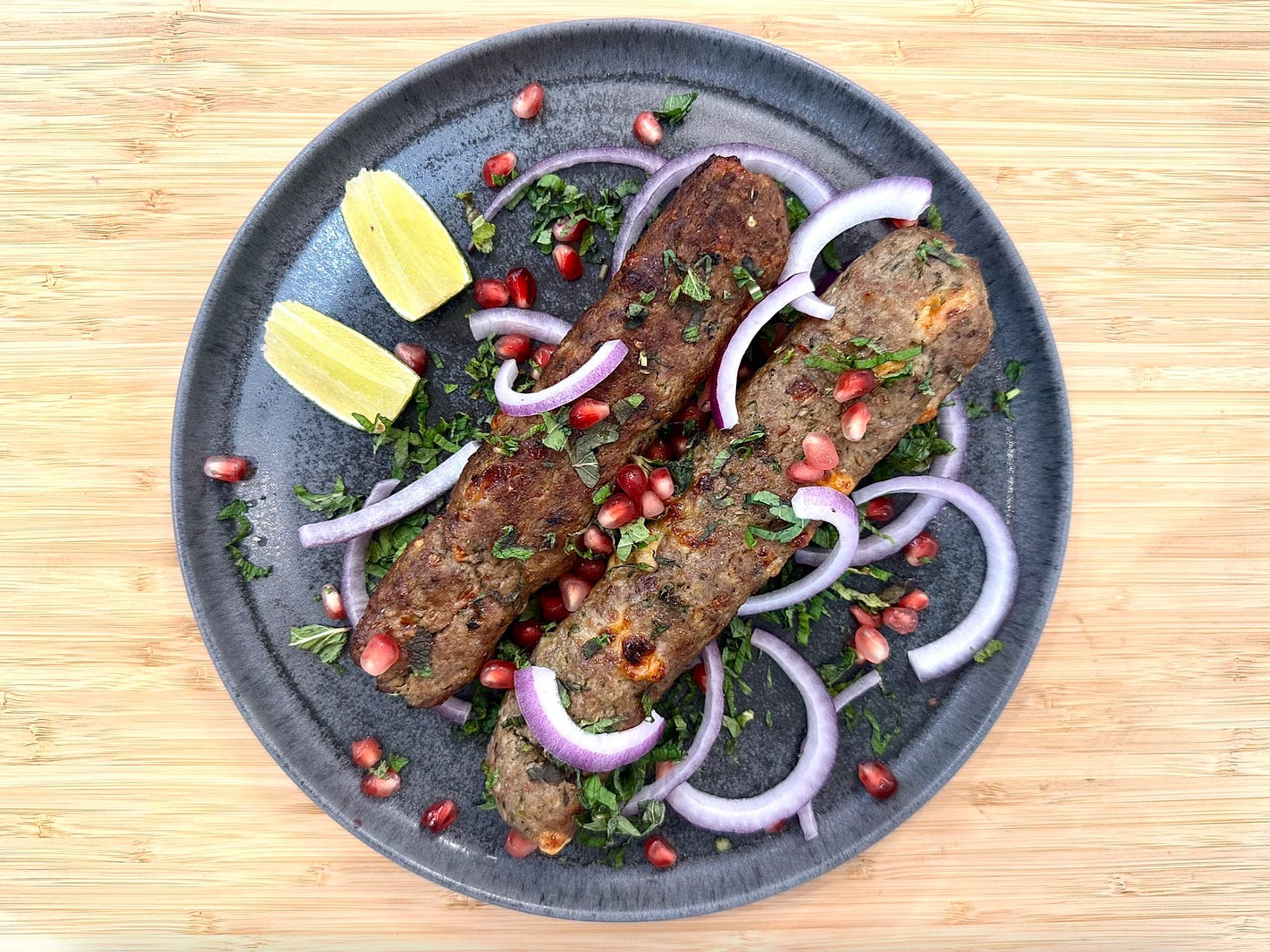

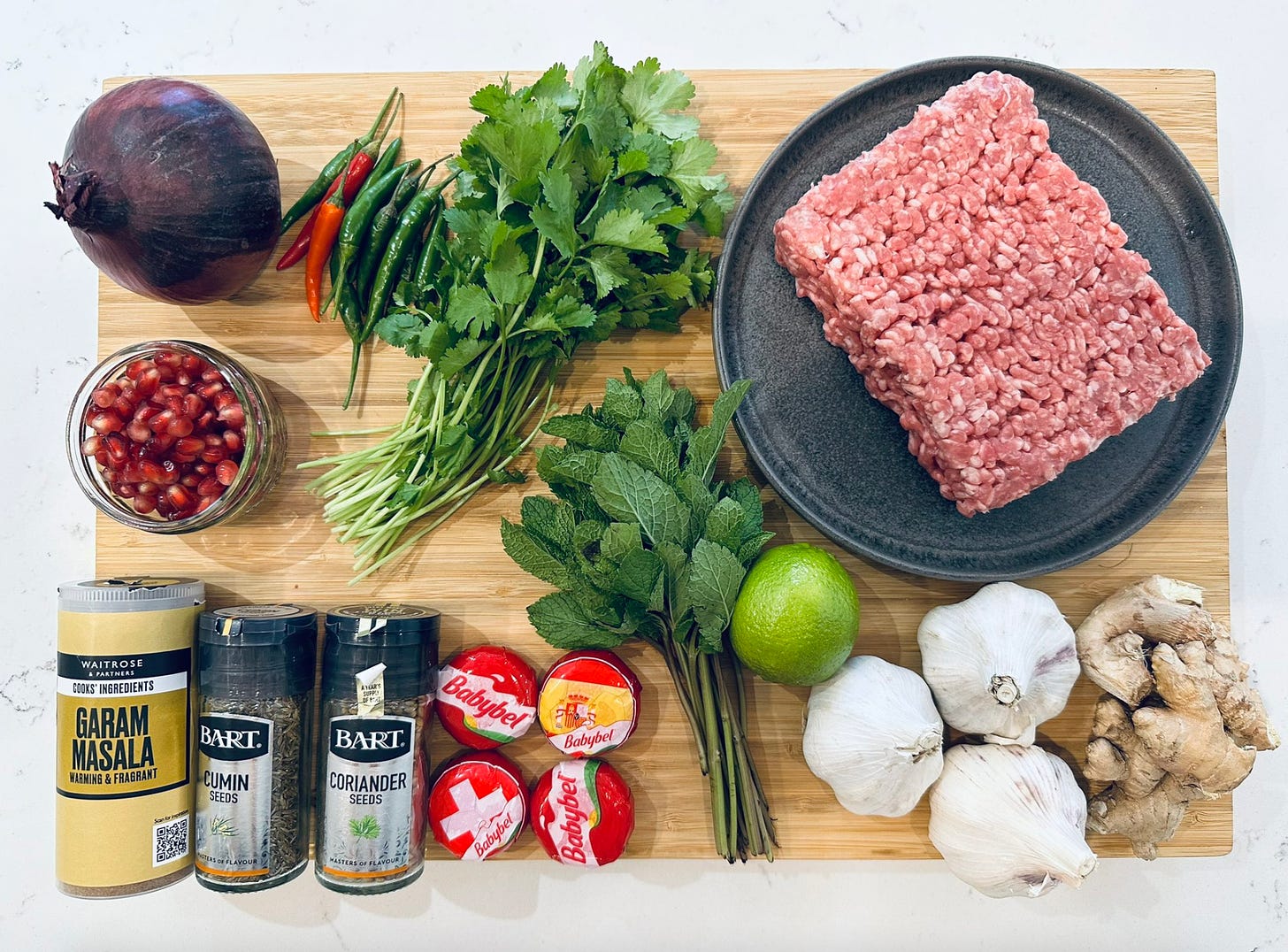
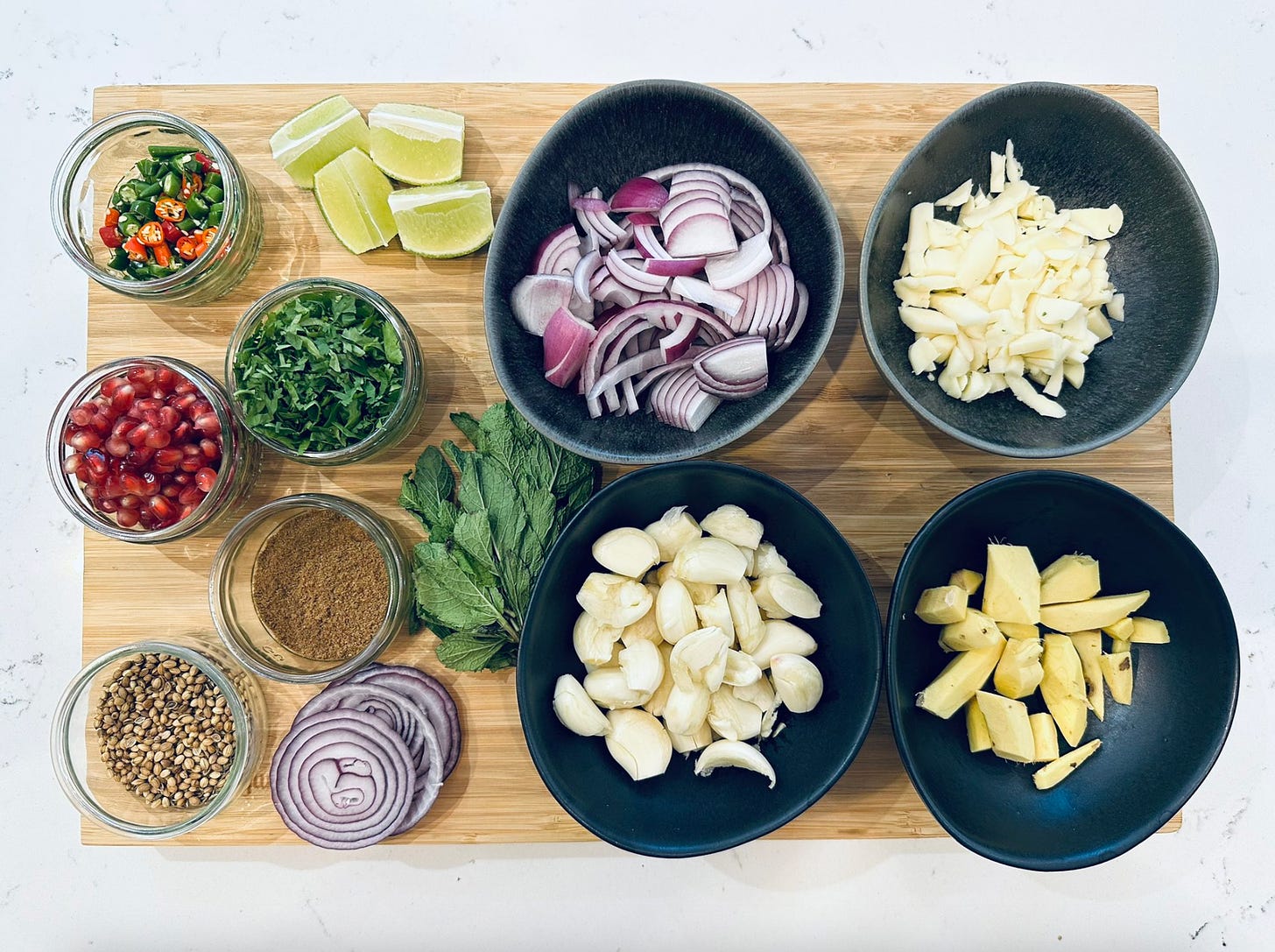

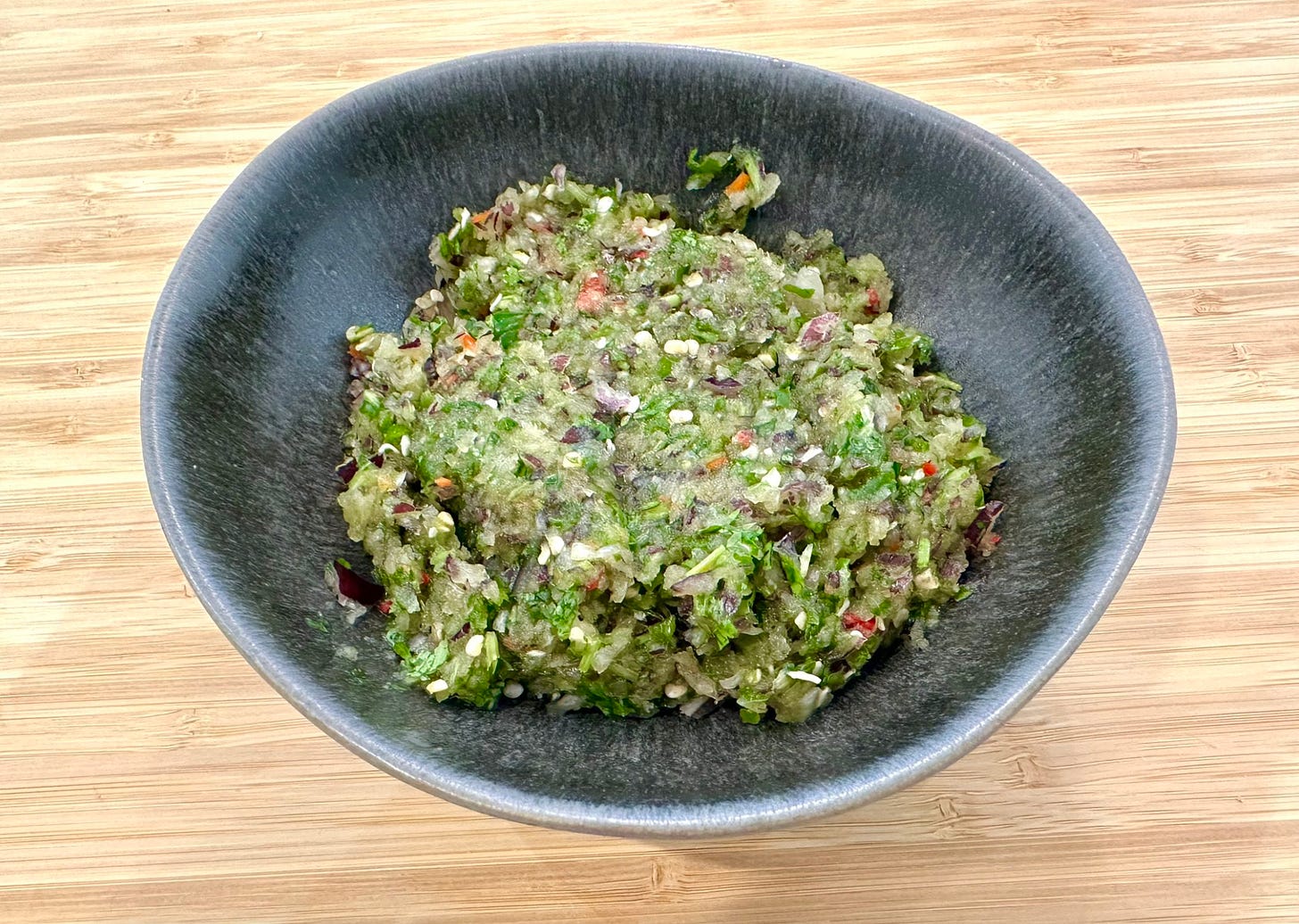
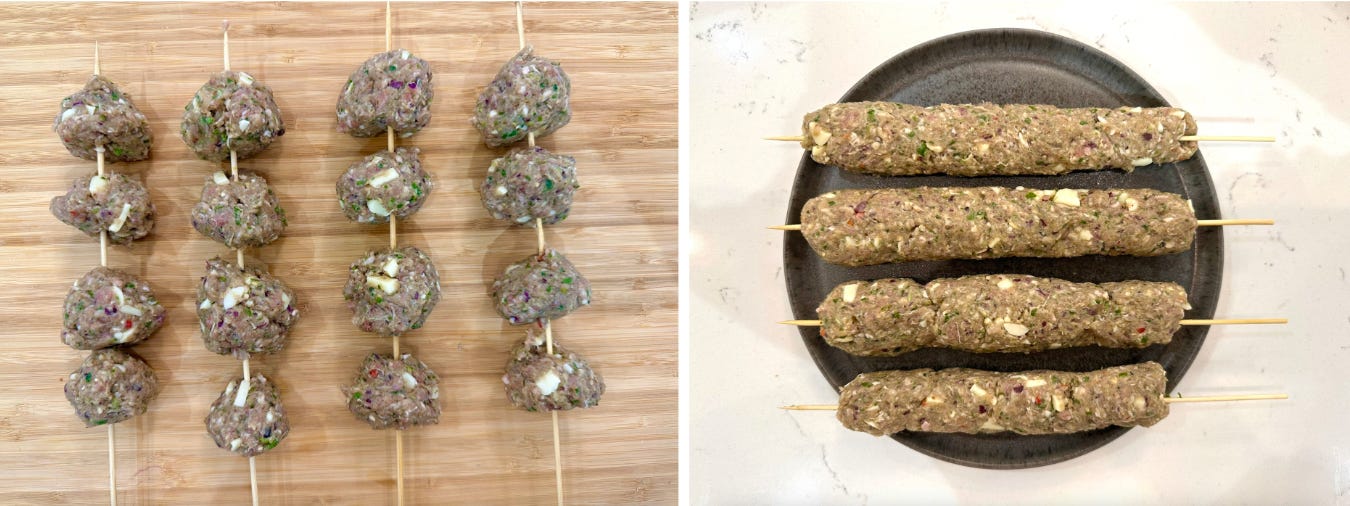
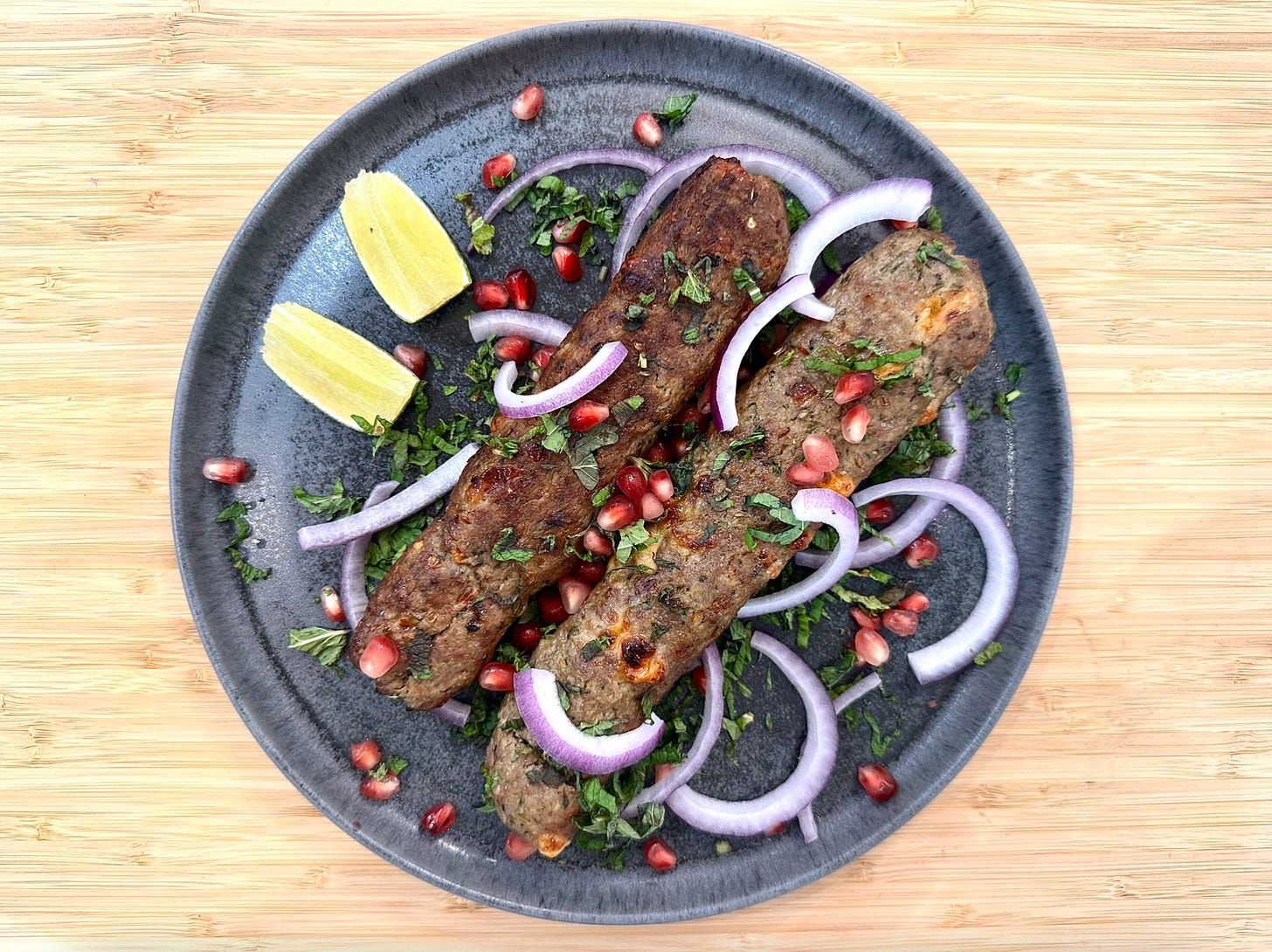
Cooking eh! Cool. You speak French or just wanted a fancy title?